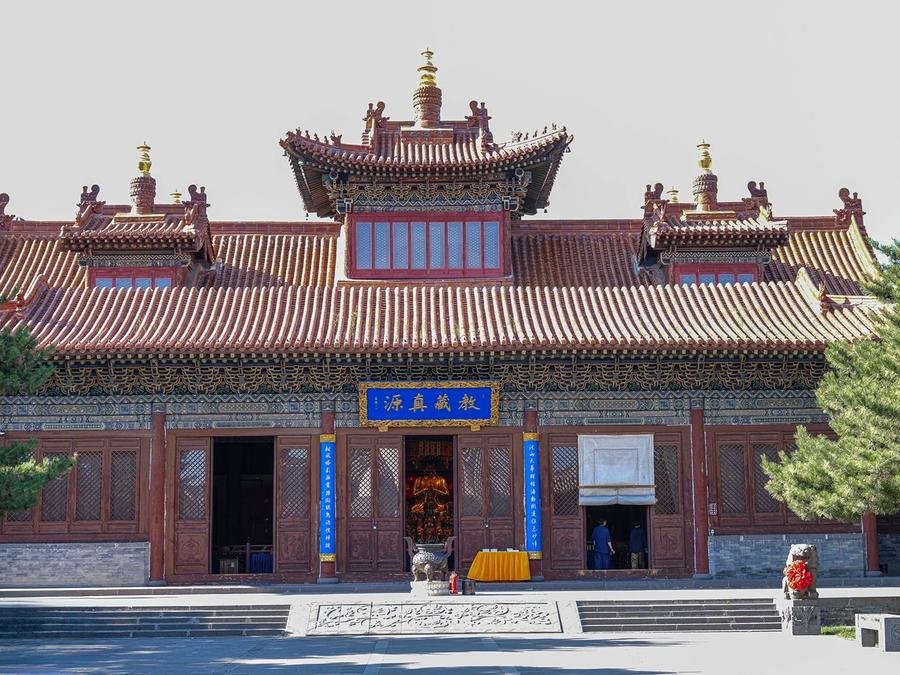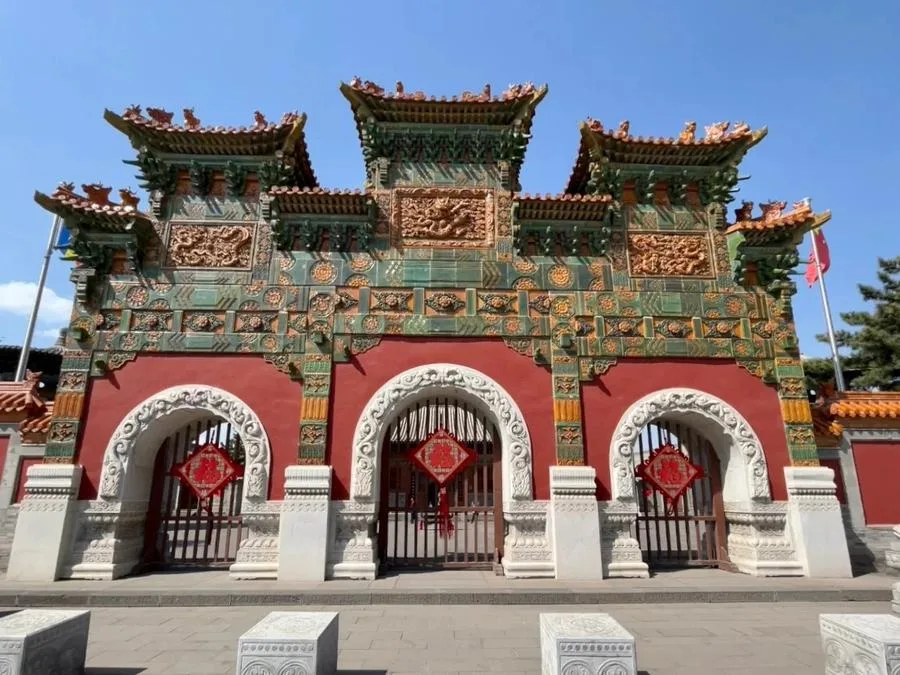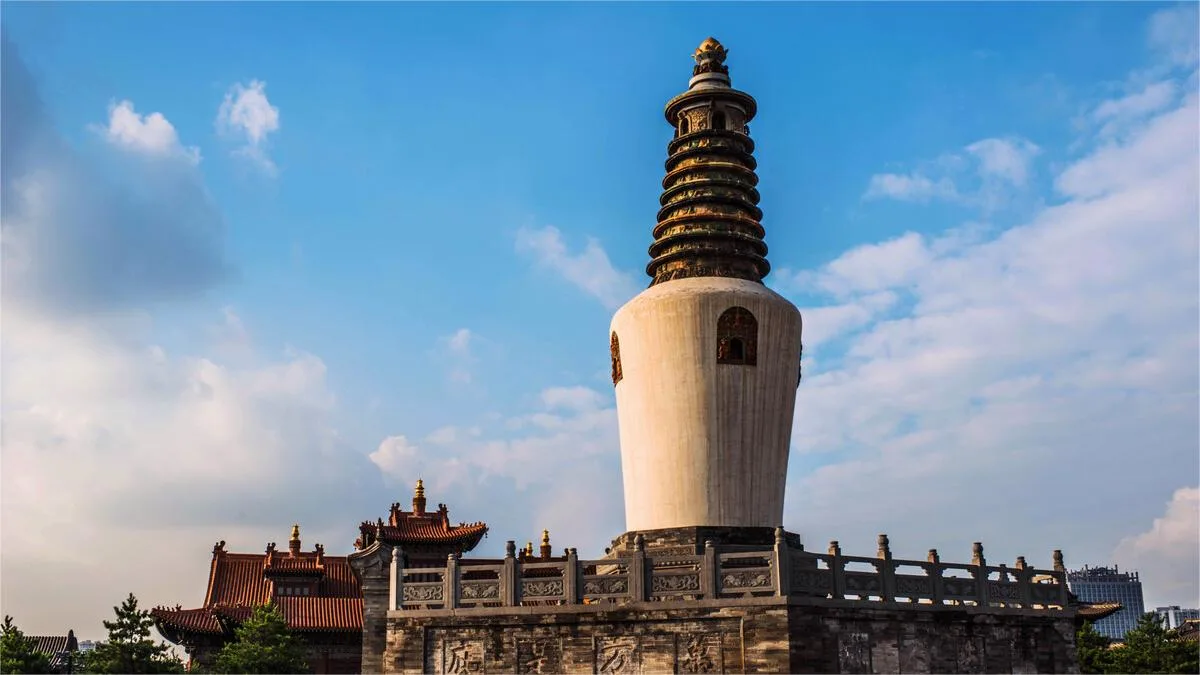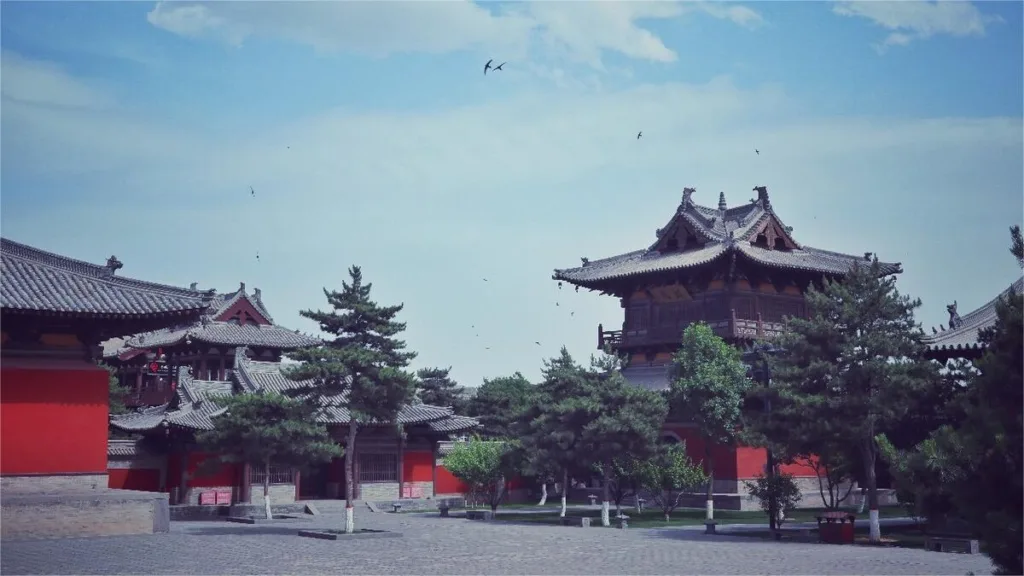Datong Fahua Temple (大同法华寺) is a distinguished example of traditional Buddhist architecture and art. Situated with a north-south orientation, it was originally built at the transition between the Yuan and Ming dynasties, around the late 14th to early 15th century. The temple’s design embodies the architectural and artistic features of this era, making it a rare and valuable historical site.
The central feature of Fahua Temple is the Fahua Pagoda, a Kubota-style stupa with a characteristic inverted bowl shape. The pagoda’s design reflects the influence of Tibetan Buddhist architecture, characterized by its layered, bulbous structure. This pagoda is named after the Lotus Sutra (法华经, Fahua Jing), a central Buddhist text, as a copy of this scripture is enshrined within it.
Table of Contents
- Basic Information
- Location and Transporation
- Highlights of Fahua Temple
- Vlog about Fahua Temple
- Other Attractions in Datong Ancient City
Basic Information
| Estimated Length of Tour | 1 -2 hours |
| Ticket Price | Free |
| Opening Hours | 8.00 – 18.00; Last admission: 17.30 (1st May – 30th September) 8.30 – 17.30; Last admission: 17.00 (1st October – 30th April) |
| Telephone Number | 0086-0571-86752736 |
Location and Transporation
Fahua Temple is situated at 137 East Street, Datong Ancient City, Pingcheng District, Datong City, Shanxi Province, China. To get there, you can take bus 38 or 59 and get off at Fahua Temple Stop (法华寺站).
Highlights of Fahua Temple
The Main Hall (Mahavira Hall)

The Main Hall houses the Three Body Buddhas, featuring the principal deities of Buddhism in a serene and majestic setting. The central Buddha statue is portrayed in a dignified seated posture, with a compassionate and serene expression. The hall is adorned with intricate suspension sculpting and deep blue and verdant colors, creating a striking and solemn ambiance.
The Heavenly King Hall

In this hall, six statues represent the key figures of Buddhist cosmology: Maitreya Buddha, Weituo (a protector deity), and the Four Heavenly Kings responsible for the natural order. The murals in this hall depict auspicious clouds, lotus flowers, peonies, and blue stones, creating a divine and harmonious setting.
The Three Sages Hall

This hall is dedicated to three significant bodhisattvas: Avalokiteshvara (Guanyin), Manjushri, and Samantabhadra. The statues in this hall are crafted with dynamic and expressive features, exuding calm and benevolence. The murals on the east and west walls feature the Eight Great Bodhisattvas and Ten Direction Buddhas, while the back wall illustrates the Lotus Sutra ceremony, highlighting the rich narrative traditions of Buddhism.
Water-Land Murals

The temple’s mountain walls are adorned with extensive water-land murals, also known as Human-God Progression Paintings. These murals depict a wide array of figures from Confucian, Daoist, and Buddhist traditions, capturing diverse cultural and religious narratives. The scenes offer a fascinating glimpse into the interplay between different religious beliefs and practices in historical China.








